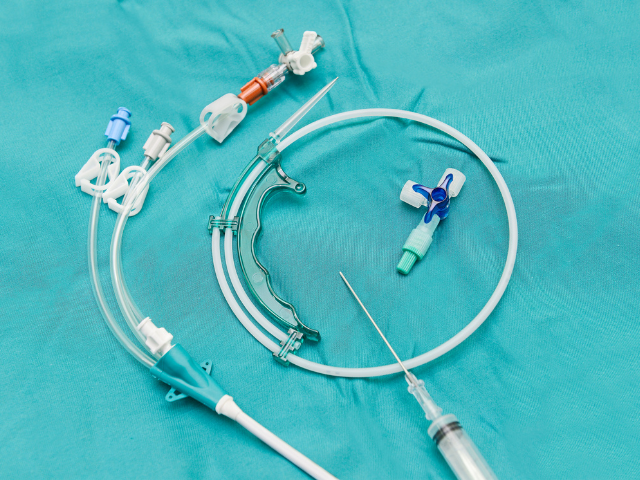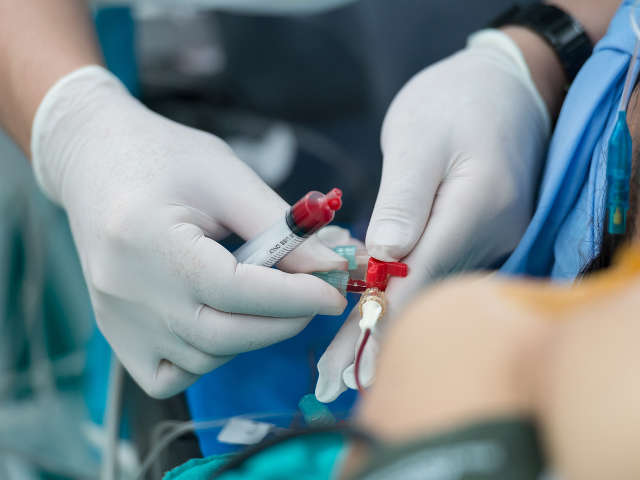What is a Central Line?
A central line, or a central venous catheter (CVC), is a long catheter used chiefly in critical care settings to access a patient’s vein. It can administer intravenous medications or total parenteral nutrition, draw blood samples, and measure central venous pressure.
A central line is inserted into a large vein, such as the internal jugular, subclavian, or femoral vein. A central line is needed for the following clinical indications:
- Vasopressor support in cases of hemodynamic instability
- Inability to acquire peripheral line access
- Needing multiple IV injections to resuscitate the patient
- Need to administer large amounts of fluids requiring a large-bore access in the vein
- Initiation of extracorporeal therapies like hemodialysis or plasmapheresis
- Need to manage central venous pressures
Central line insertion is helpful but needs proper management and utmost attention. Sometimes, various life-threatening complications can emerge because of the central line. As a nurse, you should be aware of them.
Central Line-Associated Bloodstream Infections (CLABSI)
Central line-associated bloodstream infections (CLABSI) cause most common nosocomial infections, along with hospital-acquired pneumonia. CLABSI develops within 48 hours of central line placement and is unrelated to infection at another site.
The most common organisms that cause CLABSI are coagulase-negative staphylococci, staphylococcus aureus, and Enterococcus. Methicillin-resistant Staphylococcus aureus is also seen in patients.
The signs and symptoms of CLABSI are vague, so knowing about them can be challenging. The patient may have a fever with or without chills. Assess them for signs of inflammation on the insertion site, such as redness, pain, tenderness, and swelling.
If you suspect your patient has developed CLABSI, notify the doctor. They may order a blood culture. An infected catheter may have to be removed. The healthcare provider may also request a culture of microorganisms from the catheter tip. An antibiotic sensitive to the organism should be used to treat the infection once culture results are received. According to a 2011 Centers for Disease Control and Prevention report, the mortality rate in patients developing CLABSI is 12% to 25%.
The following actions are recommendations to prevent CLABSI:
- Avoid using the femoral vein for central venous access in adult patients
- Promptly remove any catheter that is no longer needed
- Use sterile gloves to insert arterial, central, and midline catheters
- Clean the skin with >0.5% chlorhexidine preparation with alcohol before insertion of a central line
- Use sterile gauze or a sterile, transparent, semipermeable dressing to cover the catheter site
- In patients whose catheter is expected to remain in place for more than five days, use a central venous catheter impregnated with chlorhexidine/silver sulfadiazine or minocycline/rifampin
Many hospitals also provide a CLABSI care bundle to ensure policy adherence and prevent infections.
The central line can get occluded for various reasons, making it hard to flush or preventing blood from being withdrawn quickly. Occlusions can be thrombotic (due to a thrombus) or non-thrombotic (for reasons other than a thrombus.
Non-thrombotic causes of CVC occlusion include:
- Mechanical Occlusions (e.g., kinks or clamps)
- Postural Changes
- Medication Precipitate Occlusions
Thrombotic occlusions are more common than non-thrombotic ones. A thrombotic occlusion increases the risk of CLABSI, which warrants early occlusion treatment.
If you suspect an occlusion in the central line, inspect all possibilities that can cause this. Check for any kinks in the tube. See if the suture is tied too tightly to secure the central line. Ask the patient to change the posture by raising their arm or taking deep breaths to rule out postural occlusion. If the occlusion is due to a medication precipitate, consult a pharmacist. They may suggest a fibrinolytic or non-fibrinolytic agent to help clear the catheter.
Alteplase is the most common drug for thrombotic occlusions. It’s a fibrinolytic agent approved by the FDA that breaks down the clot in the catheter. Other fibrinolytic agents are also being studied.
To prevent catheter occlusions, flush all the central venous catheter lumens. Some hospitals suggest flushing the CVC with a heparin solution. The recommended amount varies but is usually between 3 ml to 5 ml. Some two-way valved devices, like the Groshong’s catheter, require only normal saline for flushing. Follow your hospital’s guidelines and flush the catheter regularly. And avoid mixing incompatible medications that may form precipitates within the CVC.
Catheter Migration or Dislodgement
Another central line complication is that the tip may migrate to another location. Flexible catheters like the PICCs are more likely to migrate. Signs and symptoms of a catheter migration include:
- Loss of blood return
- Discomfort in the upper arm during infusions
- Differing length of the external catheter from the time of insertion
If you notice that the catheter has migrated externally, do not try to push it in. However, gently pull it to the original insertion length if it has migrated internally. If the catheter is completely dislodged from its place, cover the insertion site and apply direct pressure on it. The patient will need monitoring for a possible air embolism.
To prevent a catheter from migrating, check if it is secured and the dressing is intact. Avoid pulling or manipulating the catheter. Notice the external length and compare it with the length documented at insertion.









